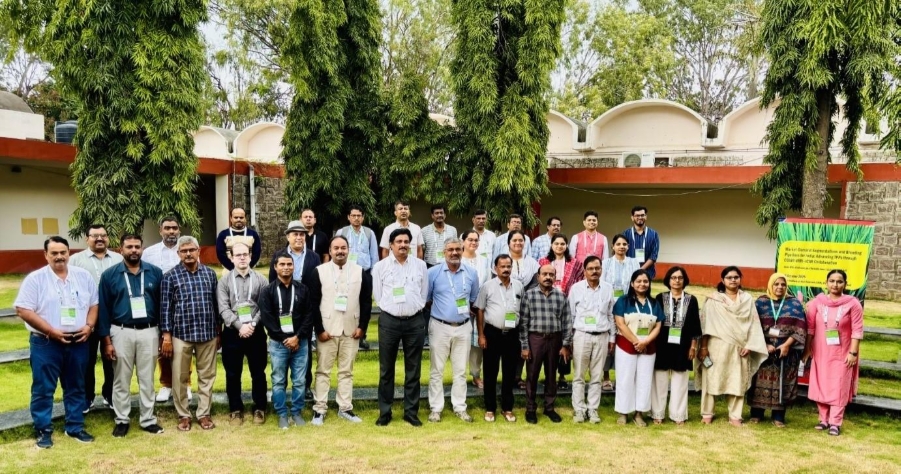
Less Is More in India’s Upcoming Rice Breeding Strategy
Hyderabad, India (25 October 2025)—India is redefining how rice breeding responds to consumer and market demand. To move beyond yield as the sole measure of success, experts are aligning breeding pipelines with grain quality, market fit, and consumer preferences.
To advance this shift, the International Rice Research Institute (IRRI), CGIAR, and the Indian Council of Agricultural Research (ICAR) convened a National Consultation on Market-Demand Segmentations and Breeding Pipelines for India at the ICAR–Indian Institute of Rice Research (IIRR) in Hyderabad. Held under the IRRI–ICAR Work Plan Thematic Areas 1 & 2 and the CGIAR Breeding for Tomorrow (B4T) initiative, The event brought together more than 70 scientists, breeders, and private-sector partners to align India’s rice breeding strategy with evolving consumer trends.
“Developing varieties that truly reflect market and consumer demand requires connecting scientific innovation with value-chain realities,” said Dr. R. M. Sundaram, Director of ICAR–IIRR. “Millers, processors, and seed systems all play a crucial role in ensuring varieties are both profitable for farmers and preferred by consumers.” He emphasized a paradigm shift from supply-driven varietal development to market-responsive product design.
Dr. Vikas Kumar Singh, IRRI’s Regional Breeding Lead of South Asia, shared how IRRI’s One Rice Breeding Strategy, an end-to-end system to develop better varieties faster, integrates nine market-driven pipelines to represent India’s diverse preferences, including new segments such as medium and short slender types.
Dr. Sankalp Bhosale, Deputy Director of IRRI’s Rice Breeding Innovations platform, added that linking breeding tools with market analytics and seed systems is accelerating genetic gain and adoption under the One Rice Breeding Strategy.
From a global perspective, Dr. Biswanath Das (CIMMYT) of CGIAR’s Breeding for Tomorrow (B4T) initiative emphasized the value of “fewer but better” pipelines, concentrating efforts on varieties with the highest potential impact.
Supporting this, Dr. Michael Quinn, IRRI’s Rice Breeding Director, noted that informed decisions rely on good data and market insights, saying “target product profiles should define clear benefits for everyone, from higher productivity and resilience for farmers to better quality for consumers.”
Dr. Shalabh Dixit, IRRI Senior Scientist, noted that defining clear market segments and well defined TPP, prevents duplication, optimizes investment, and sharpens focus on traits with the highest value.

Regional and private-sector partners, from ICAR–IIRR, ICAR–IARI, ICAR–CRRI, RiceTec, and Bayer, also shared perspectives on integrating segmentation into breeding programs, highlighting opportunities in low-GI rice, DSR systems, and climate-resilient varieties. By early 2026, India aims to finalize Target Product Profiles for all priority market segments, integrating them into IRRI–ICAR pipelines.
Held under the IRRI–ICAR Work Plan, the consultation reaffirmed India’s leadership in building a unified, market-responsive breeding strategy that connects farmers’ needs with consumers’ expectations.
This initiative is also part of CGIAR Breeding for Tomorrow (B4T) Science Program through Enable Areas of Work. The program aims to strengthen partnerships with NARES, SMEs, and universities by ensuring co-creation, co-delivery and co-ownership.